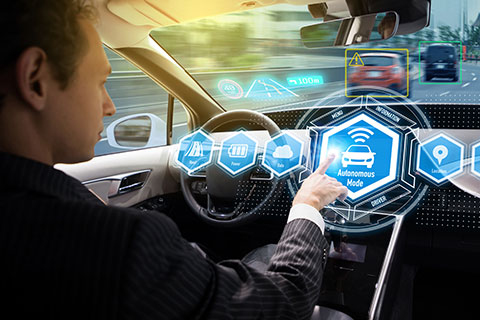Introduction: As technology continues to advance, the automotive industry is undergoing a significant transformation with the integration of 5G technology. The introduction of 5G networks promises to revolutionize connected vehicles, offering faster and more reliable communication capabilities. In this blog, we will explore the impact of 5G technology on connected vehicles, delving into its potential to enhance safety, improve navigation systems, enable autonomous driving, and revolutionize the overall driving experience. Join us as we delve into the world of 5G-connected vehicles and uncover the exciting possibilities that lie ahead.
Faster and More Reliable Communication
One of the key benefits of 5G technology in connected vehicles is its ability to provide faster and more reliable communication. With 5G networks, vehicles can access and transmit data at lightning-fast speeds, enabling real-time communication between vehicles, infrastructure, and the cloud. This opens up a world of possibilities for connected services, such as real-time traffic updates, weather information, and remote vehicle diagnostics. Faster and more reliable communication also enhances safety features, allowing vehicles to exchange critical information, such as collision warnings and emergency braking signals, in near real-time.
Enhanced Navigation and Mapping Systems
5G technology brings significant advancements to navigation and mapping systems in connected vehicles. With its high-speed and low-latency capabilities, 5G enables real-time, high-definition mapping and precise positioning, ensuring accurate navigation guidance. This means more accurate turn-by-turn directions, real-time traffic updates, and the ability to dynamically reroute based on changing road conditions. Additionally, 5G networks enable vehicles to access cloud-based mapping services, allowing for seamless updates and access to the latest mapping data. This ensures that drivers have access to the most up-to-date information for a smoother and more efficient driving experience.
Enabling Autonomous Driving

5G technology plays a crucial role in enabling autonomous driving by providing the necessary infrastructure for vehicle-to-vehicle (V2V) and vehicle-to-infrastructure (V2I) communication. Autonomous vehicles rely on real-time data exchange to make informed decisions and navigate safely on the roads. 5G networks, with their ultra-low latency and high reliability, enable autonomous vehicles to communicate with each other and with roadside infrastructure, such as traffic lights and road signs, in real-time. This facilitates coordinated movements, enhances traffic flow, and improves overall road safety. Moreover, the massive bandwidth provided by 5G networks allows for the seamless transmission of large amounts of data generated by autonomous vehicles, such as sensor inputs and high-definition camera feeds.
Revolutionizing the Driving Experience
Beyond safety and navigation, 5G technology has the potential to revolutionize the overall driving experience. With 5G connectivity, connected vehicles can provide passengers with a range of entertainment and infotainment options. Passengers can stream high-definition content, access personalized media services, and enjoy interactive experiences seamlessly while on the move. Furthermore, 5G technology enables the integration of augmented reality (AR) and virtual reality (VR) into the driving experience, enhancing features such as heads-up displays and providing immersive entertainment options for passengers. Additionally, 5G connectivity facilitates over-the-air software updates, ensuring that connected vehicles always have the latest features and enhancements.
Conclusion: The integration of 5G technology in connected vehicles holds immense potential to revolutionize the automotive industry. With faster and more reliable communication, enhanced navigation systems, and the enablement of autonomous driving, 5G brings a new level of connectivity and convenience to the driving experience. As 5G networks continue to expand and evolve, we can expect to see further advancements in connected vehicle technology, paving the way for safer, more efficient, and immersive driving experiences. The future of connected vehicles powered by 5G technology is undoubtedly exciting, opening up a world of possibilities for the automotive industry and transforming the way we drive.





